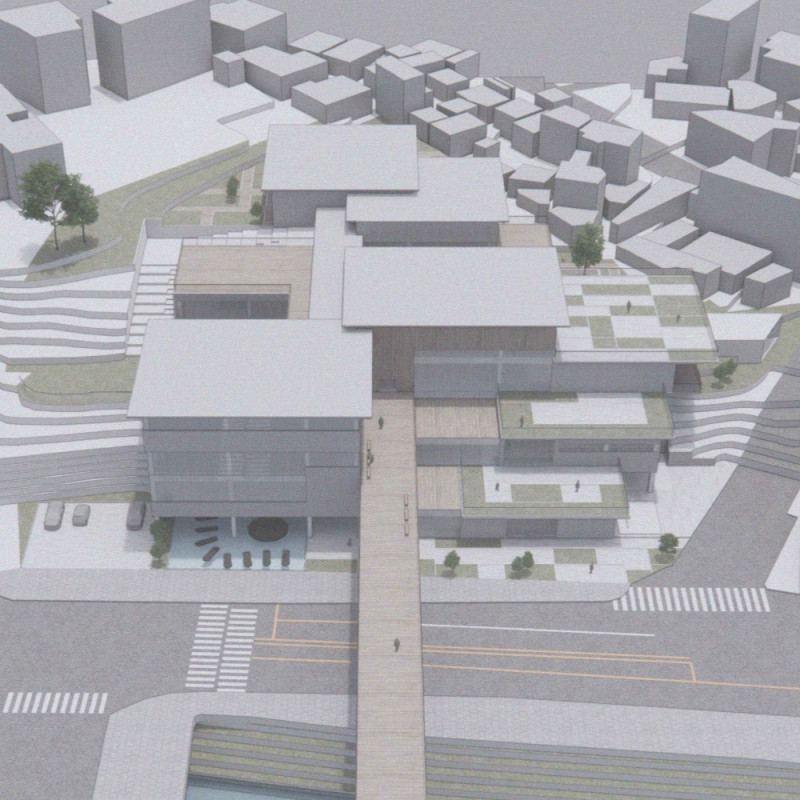5 key facts about this project
Functionally, the project serves as a multi-functional space designed to accommodate residential or communal activities, providing areas for relaxation, social gatherings, and personal reflection. The design effectively utilizes open floor plans that encourage fluid movement while maintaining distinct zones for different uses. This thoughtful arrangement simplifies circulation, which enhances user experience and accessibility throughout the space.
One of the notable attributes of the project is its consideration of materiality. Various materials have been strategically selected to align with the overall design philosophy. Reinforced concrete forms the backbone of the structure, offering strength and stability, while extensive glazing solutions invite natural light deep into the interior, maximizing visual connections with the exterior. This choice not only fosters energy efficiency but also enables occupants to engage with their surroundings, reflecting the project’s commitment to creating a nurturing living environment.
Sustainable timber plays a significant role in the design, incorporated into elements such as decking and cladding, which adds warmth and texture. The natural aesthetic of the timber contrasts thoughtfully with the sleekness of the concrete and glass, creating a visually pleasing composition. Natural stone is also featured, contributing to the project’s tactile qualities while promoting a sense of permanence and durability. Metal accents, used in railings and structural details, provide a contemporary touch that enhances the architectural expression without overwhelming the overall design narrative.
The project emphasizes unique design approaches that extend beyond conventional frameworks. One such approach is the incorporation of cantilevered rooflines, which not only contribute to the modern aesthetic but also promote passive cooling and shelter from the elements. These overhangs create shaded outdoor areas that expand the living space into the landscape, encouraging outdoor activities and social interaction. Another noteworthy aspect is the integration of outdoor living spaces, featuring expansive terraces that merge indoor and outdoor experiences. This design choice supports an active lifestyle and fosters connections among residents or visitors.
Landscaping is meticulously considered throughout the project, with an emphasis on utilizing native plants that require minimal maintenance. This choice enhances local biodiversity while also demonstrating environmental stewardship. The positioning of the building within the site takes advantage of the natural topography, creating vistas that enhance the users' experience and attraction to the outdoors.
Furthermore, the architectural design prioritizes natural lighting solutions through strategic positioning of windows and skylights, ensuring that every corner of the building receives adequate light throughout the day. This consideration not only reduces energy consumption but also creates a lively atmosphere, allowing the space to evolve with the changing light conditions.
Overall, this architectural project is characterized by its thoughtful integration of sustainable practices, innovative design elements, and a deep connection to its context. The careful orchestration of materials, space, and light reinforces a commitment to creating an environment that is both functional and inviting. Those interested in delving deeper into the aesthetic and functional nuances of the project are encouraged to explore the architectural plans, sections, and designs available, which reveal the intricacies of this impressive architectural idea. Discovering these elements provides valuable insights into the project's underlying philosophy and its execution in a contemporary context.


























